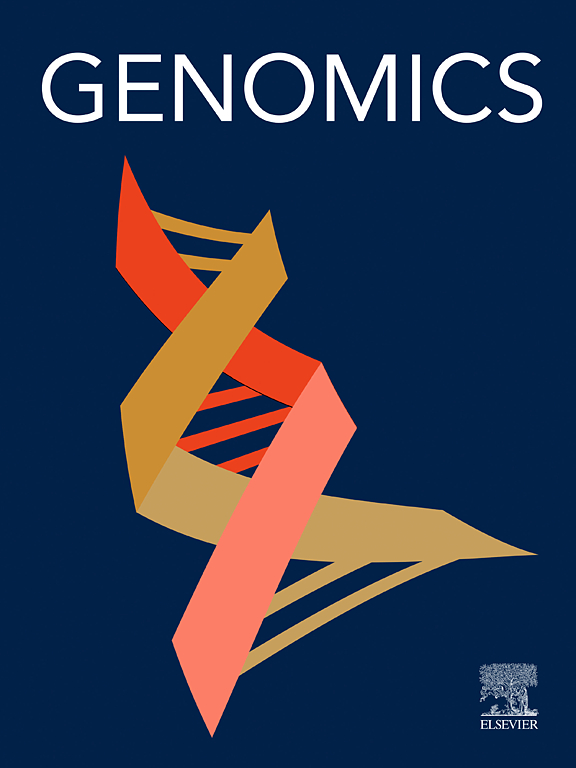代谢组学和转录组学联合分析揭示了IgA肾病小鼠肾组织的代谢变化。
IF 3
2区 生物学
Q2 BIOTECHNOLOGY & APPLIED MICROBIOLOGY
引用次数: 0
摘要
背景:免疫球蛋白A肾病(IgAN)是一种全球流行的原发性慢性肾小球病变,也是终末期肾脏疾病的主要原因。尽管具有重要意义,但IgAN的潜在机制仍然知之甚少。本研究旨在通过整合代谢组学和转录组学方法来研究这些机制。方法:建立IgAN小鼠模型,采用苏木精伊红(HE)染色和免疫荧光染色进行病理分析。采用酶联免疫吸附试验(ELISA)和生化试验评估肾功能。基于质谱的代谢组学用于分析差异丰富代谢物(DAMs),而转录组学用于分析差异表达基因(DEGs)。结果:成功建立IgAN小鼠模型。HE染色显示肾小球系膜细胞增生异常,免疫荧光染色显示肾小球区沉积过多。ELISA结果显示,IgAN小鼠血清中IgA水平显著升高。生化试验显示,IgAN小鼠血肌酐(CRE)、尿素氮(BUN)和尿蛋白水平均显著升高。代谢组学和转录组学分析在正常小鼠和IgAN小鼠的肾脏组织中分别鉴定出184个dam和482个deg。值得注意的是,综合分析显示dam和deg在3个关键途径中都富集:胆汁分泌、丙酮酸代谢和胆固醇代谢。结论:在本文中,我们通过代谢组学和转录组学的综合分析,确定了3个关键途径——胆汁分泌、丙酮酸代谢和胆固醇代谢。这些途径可能在影响IgAN小鼠肾组织代谢变化中发挥重要作用,并为IgAN的发病机制提供新的见解。本文章由计算机程序翻译,如有差异,请以英文原文为准。
The combined analysis of metabolomics and transcriptomics revealed the metabolic changes of kidney tissue in mice with IgA nephropathy
Background
Immunoglobulin A nephropathy (IgAN) is a globally prevalent primary chronic glomerulopathy and a leading cause of end-stage renal disease. Despite its significance, the underlying mechanisms of IgAN remain poorly understood. This study aims to investigate these mechanisms by integrating metabolomics and transcriptomics approaches.
Methods
We established an IgAN mouse model and conducted pathological analysis using hematoxylin and eosin (HE) staining and immunofluorescent staining. Renal function was assessed by enzyme-linked immunosorbent assay (ELISA) and biochemical assays. Mass spectrometry-based metabolomics was employed to analyze differentially abundant metabolites (DAMs), while transcriptomics was employed to analyze differentially expressed genes (DEGs).
Results
An IgAN mouse model was successfully established. HE staining revealed abnormal proliferation of glomerular mesangial cells, while immunofluorescence staining indicated excessive deposition in the glomerular region. ELISA results showed that IgA levels were significantly elevated in the serum of IgAN mice. Biochemical tests showed that blood creatinine (CRE), blood urea nitrogen (BUN) and urine protein levels were significantly elevated in IgAN mice. Metabolomics and transcriptomics analyses identified 184 DAMs and 482 DEGs in the kidney tissues of normal and IgAN mice, respectively. Notably, combined analyses revealed that both DAMs and DEGs were enriched in 3 key pathways: bile secretion, pyruvate metabolism, and cholesterol metabolism.
Conclusion
In this article, we identified 3 critical pathways—bile secretion, pyruvate metabolism, and cholesterol metabolism—through a comprehensive analysis of metabolomics and transcriptomics. These pathways may play an important role in affecting metabolic changes in the renal tissue of IgAN mice and provide fresh insights into the pathogenesis of IgAN.
求助全文
通过发布文献求助,成功后即可免费获取论文全文。
去求助
来源期刊

Genomics
生物-生物工程与应用微生物
CiteScore
9.60
自引率
2.30%
发文量
260
审稿时长
60 days
期刊介绍:
Genomics is a forum for describing the development of genome-scale technologies and their application to all areas of biological investigation.
As a journal that has evolved with the field that carries its name, Genomics focuses on the development and application of cutting-edge methods, addressing fundamental questions with potential interest to a wide audience. Our aim is to publish the highest quality research and to provide authors with rapid, fair and accurate review and publication of manuscripts falling within our scope.
 求助内容:
求助内容: 应助结果提醒方式:
应助结果提醒方式:


